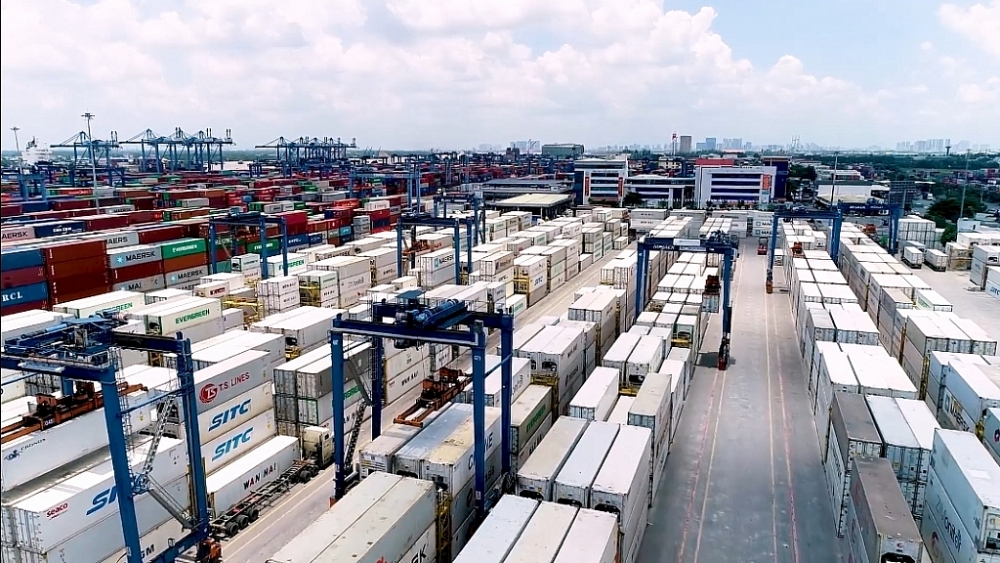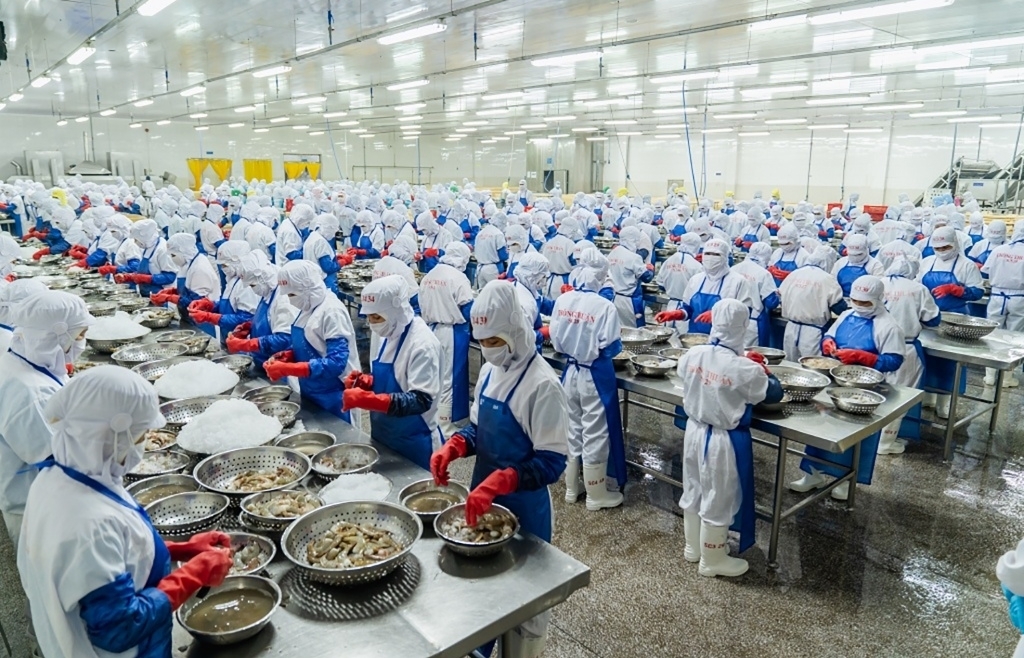Businesses should prepare for lack of empty containers
| Shortage of empty containers due to Covid-19 and trade surplus | |
| Scarcity of empty containers due to the Covid-19 pandemic and export surplus |
 |
| The lack of empty containers is affecting the export of goods of enterprises. Photo: T.H |
According to forecasts, the shortage of ships and lack of empty containers could last to February and March 2021. If the Covid-19 pandemic is still not controlled, it is likely that this situation could last longer.
According to the Ministry of Industry and Trade, at the end of the year, the agricultural and fishery industries are in the peak season for trading and delivery for the following year, so the volume of exports is very high. Rice exporting enterprises said that the goods are ready for delivery, but they had to wait for the shipping lines to announce gatherings to be exported, causing an average delay of 7 to 20 days.
Coffee export enterprises reflected that, in addition to the charges that are being paid twice as much as in normal months, they also have to pay high prices for shipping lines (some shipping lines collect US$1,000 per container).
Cashew and tea exporters said that they cannot export to key markets when the fee increases 6-7 times, from $700-800/container to more than $4,000-5,000/container. Many shipping lines announced cutting service on some routes and haven’t planned for 2021.
For goods exported to the US and Europe, the shipping cost is increasing. Many businesses said in the previous period (the first occasion of the year) exported goods to the US, shipping costs for shipping lines only lost from $1,800 to $2,200 / 40 feet container.
Now, shipping lines have increased to $5,500 and $6,300/40-feet container to America, and $8,000/container to Europe.
Currently, due to the impact of the Covid-19 pandemic, social distancing and the decline in handling capacity of the ports in Europe and North America have led shipping lines to cut down on shipments and cargo space. The impact of the Covid-19 pandemic also reduced the production capacity of regions such as Latin America, Eastern Europe, and South Asia, so the US and Europe increased imports from East Asian countries, such as China and Vietnam.
The Covid-19 lockdowns in countries has resulted in a shortage of manpower to handle the goods, so empty containers are stagnant in North America and Europe while there are shortages in China and East Asia, pushing up container rental rates.
The shortage of empty containers in China occurred earlier and was more serious, so China sought to collect containers from other countries. The number of containers being sent to China caused a shortage of containers in many other countries, including Vietnam.
With the disruption of supply and low inventory, the ability to transport goods can be interrupted whenever importers increase their reserves at all costs, creating a stressful mentality and forcing exporters to accept high costs to ship.
On the other hand, the capacity to receive and manage empty containers of Vietnamese enterprises is limited, there is no large empty container depot, while small and scattered depots cannot meet the demand for packing export goods.
The Ministry of Industry and Trade said that the increase in shipping charges and container rental rates will have an adverse impact on Vietnam's export activities.
The increase in ship and container rental charges does not affect Vietnamese exporters that apply the method of "selling FOB", but the fact that goods have to be stored in waiting for export causes damage to businesses.
Storage costs have been increased to an estimated 5-10% of the shipment's value. As for businesses that choose to "sell C&F" or "sell CIF", the extra payment from a few hundred to thousands of USD/container that makes export costs skyrocket, these expenses are not expected and a high level will cause damage and losses for export enterprises.
The increase in ship charter rates also has the effect of increasing fees and charges at the port such as loading and unloading fees (THC), container imbalance charges (CIC), peak season surcharge. The Vietnamese business are suffering due to these fees.
According to enterprises, although there are plans and scenarios for the shortage of containers and the increase in shipping charges, the situation is getting worse, it makes enterprises struggle to be proactive in exporting goods and makes it easy to violate the contract, affecting credibility.
Facing the above situation, the Vietnam Association of Seafood Exporters and Producers (VASEP) has recommended that seafood import-export enterprises need to plan to minimize disruptions in the supply chain and reduce the decrease in exports of each enterprise and the total turnover of the whole industry.
Currently, VASEP is conducting a survey from businesses on this issue to evaluate and report to the Government and relevant ministries and agencies to remove difficulties and accompany the seafood business community.
After some quarters of unstable or decreasing seafood exports due to the Covid-19 pandemic, VASEP gave an optimistic forecast and hopes for export growth in the fourth quarter of 2020, bringing the year-round export turnover to $8.6 billion.
But the lack of empty containers for packing affects a lot of enterprises. It’s likely to affect the growth of the industry, and turnover will not reach the plan due to the decrease in export value in November and December 2020 because many orders are delayed.
Related News

Businesses need support from vietnamese representative offices abroad
14:48 | 20/11/2024 Headlines

What do businesses need for digital transformation?
09:20 | 17/11/2024 Headlines

The realities of cutting down on business licenses
10:13 | 12/11/2024 Headlines

Bac Ninh Customs encourages customs brokerage services
15:32 | 05/11/2024 Customs
Latest News

VN's food processing industry struggles to improve quality and value chain integration
15:53 | 22/11/2024 Import-Export

Approach strategy of the seafood industry when implementing UKVFTA
09:26 | 22/11/2024 Import-Export

Mid-November: Vietnam's trade volume matches 2023 total, eyes record-breaking growth
09:25 | 22/11/2024 Import-Export

Vietnamese enterprises facing challenges from cross-border e-commerce platforms
14:32 | 21/11/2024 Import-Export
More News

Vietnam, Malaysia eye new milestone in trade ties
14:29 | 21/11/2024 Import-Export
Shrimp exports surge in 10 months, generating 3.2 billion USD
14:27 | 21/11/2024 Import-Export

Vietnam’s exports to the U.S. near US$100 billion milestone
09:46 | 21/11/2024 Import-Export

From the “abnormal” coffee price, worries about the new crop
09:46 | 21/11/2024 Import-Export

What obstacles limit the market share of Vietnamese goods in the UK?
14:49 | 20/11/2024 Import-Export

Why seafood exports to some Middle Eastern Countries are stalled
14:47 | 20/11/2024 Import-Export

Storm No. 3 destroys profits of many insurance companies
14:45 | 20/11/2024 Import-Export

Vietnam, Malaysia eye golden partnership opportunities in Halal industry
14:44 | 20/11/2024 Import-Export

Tra fish sector aiming for production, processing greening for sustainable development
14:41 | 20/11/2024 Import-Export
Your care

VN's food processing industry struggles to improve quality and value chain integration
15:53 | 22/11/2024 Import-Export

Approach strategy of the seafood industry when implementing UKVFTA
09:26 | 22/11/2024 Import-Export

Mid-November: Vietnam's trade volume matches 2023 total, eyes record-breaking growth
09:25 | 22/11/2024 Import-Export

Vietnamese enterprises facing challenges from cross-border e-commerce platforms
14:32 | 21/11/2024 Import-Export

Vietnam, Malaysia eye new milestone in trade ties
14:29 | 21/11/2024 Import-Export





